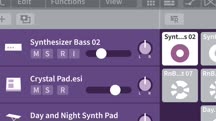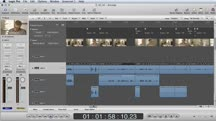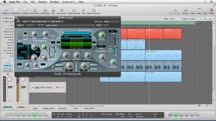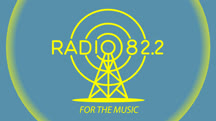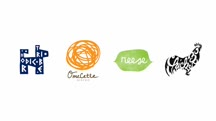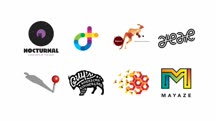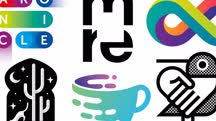کاتالوگ دورهها
طبقهها
نمایش 5,481 تا 5,500 مورد از کل 9,135 مورد.
Logic Pro X: Producing Music with Live Loops (227984)
Learn how to use Live Loops in Logic Pro 10.5 to produce music. Instructor Scott Hirsch starts by introducing basic concepts for working in the Live Loops grid view. Next, Scott shows how to integrate the new Step Sequencer and Drummer Tracks. Find out how to establish a composition by building scenes in the Live Loop grid. Scott also demonstrates the process of recording your Live Loop performance into the traditional timeline. Explore how to use the new Sampler and Quick Sampler. After that, Scott introduces how to use Drum Synth, Step Sequencer, and how to design your own drum machine to create evocative-sounding and sequenced beats. Then, learn about mixing and remixing with Remix FX and Drum Machine designer enhancements.
Logic Pro X: Virtual Instruments
Improve music and audio production using the virtual instruments in Logic Pro X. Learn how to apply effects and take a tour of synthesizers, samplers, drum kits, and sound design.
Logic Pro: Mixing a Short Film
Explore a powerful round-trip workflow between Logic Pro and Final Cut Pro that enables sound editors to quickly mix dialogue, sound effects, and music for film.
Logic Pro: Producing Electronic Music (210321)
Electronic music is an umbrella term for a wide variety of genres and sounds, from ambient, dub, acid house, trap, drum and bass, dubstep, and more. But whatever style you produce, Logic Pro can handle it. This powerful DAW is uniquely suited to capturing your creativity and expressing your sonic ideas. In this course, instructor Nate Mars shows you the core techniques professionals use to produce electronic music in Logic Pro.
He starts with building the foundation of the track—the drums. He shows how to program beats in Ultrabeat, utilize your own samples, and create drumbeats for a variety of genres. He then moves into creating basslines for house, trap, dubstep, and other genres, and getting a great deep sub-bass sound. He next moves into creating lead synth sounds, starting with Logic Pro's built-in Alchemy and Retro synths. He also goes into using samples and adding sound effects. Then he pulls it all together and demonstrates ways to arrange the tracks, use creative effects, mix the tracks together, and use automation to finalize the mix. Plus, learn how to send your MIDI note and clock data to external synths from Logic Pro X—a fun way to experiment with analog sounds.
He starts with building the foundation of the track—the drums. He shows how to program beats in Ultrabeat, utilize your own samples, and create drumbeats for a variety of genres. He then moves into creating basslines for house, trap, dubstep, and other genres, and getting a great deep sub-bass sound. He next moves into creating lead synth sounds, starting with Logic Pro's built-in Alchemy and Retro synths. He also goes into using samples and adding sound effects. Then he pulls it all together and demonstrates ways to arrange the tracks, use creative effects, mix the tracks together, and use automation to finalize the mix. Plus, learn how to send your MIDI note and clock data to external synths from Logic Pro X—a fun way to experiment with analog sounds.
Logic Pro: Virtual Instruments
Shows how to improve music and audio productions using virtual instruments in Logic Pro.
Logistic Regression in R and Excel
Learn how to perform logistic regression using R and Excel. This course shows how to process, analyze, and finalize forecasts and outcomes.
Logistics Foundations
Learn the ins and outs of logistics: a critical component of supply chain management.
Logo Animation Techniques
Learn how to animate a logo in After Effects. Explore six different logo animation techniques for communicating the story of your brand.
Logo Design: Handmade Aesthetic
Give logo designs a handmade aesthetic and add a sense of authenticity to your client's brand and messaging, with tips from LogoLounge founder Bill Gardner.
Logo Design: Illustrating Logo Marks
Take your logo designs to the next level. Learn techniques for creating vector-based logos that display beautifully in any format.
Logo Design: Shapes and Symbols
Learn how shapes and symbols help designers weave a story into their logo designs, and explore the mystery behind these forms.
Logo Design: Symbolism in Nature
Tackles the hidden symbolism behind how we depict our planet and teaches you how to use these symbols to give your logo designs more impact.
Logo Design: Techniques
Learn how to design a logo. Learn the principles of logo design by deconstructing popular logos and then constructing your own in Adobe Illustrator.
Logo Design: Visual Effects
Learn about six different visual effects, from transparency to optical illusion, that you can use in your logo concepts to communicate the right message.
Logo Development: Identity Design and Discovery
Learn how to navigate an identity project through the design and discovery process, to ensure that you grasp where your client is coming from before you craft their logo design.
Logo Development: Identity Development
Discover how to navigate through the identity development process. Learn techniques that can help you generate novel ideas, sketch your logo, and present your designs to clients.
Logo Trend Report 2016-2017
Learn the secrets of detecting logo design trends with this exploration of over 200 logos, helping you create fresh, original, and relevant logo designs.
Logo Trend Report 2017-2018
Learn about the direction of the logo design industry. Get the guidance you need to craft solutions that will be as relevant as those created by the most seasoned professional.
Logo Trend Report 2018-2019
Discover which directions the logo design industry is going. Learn how to craft compelling—and highly relevant—solutions and anticipate the trajectory of trends yet to come.
Logo Trend Report 2019-2020
Get up to speed with the current direction the logo design industry is going. Get resources and guidance for leveraging the latest trends to create stylish, relevant solutions.
